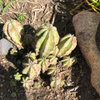lenchtenbergia principis
c_breer
12 years ago
I found one at a local nursery and wanted to know the needs and wants of the plant the tap root is massive and is overwhelming the tiny plastic pot should i repot and expose the caudex or bury it to make it larger?



paracelsus
paracelsus
Related Professionals
Londonderry Landscape Architects & Landscape Designers · Windham Landscape Architects & Landscape Designers · Belmont Landscape Architects & Landscape Designers · Milford Landscape Contractors · Bedford Landscape Contractors · Burlington Landscape Contractors · Clark Landscape Contractors · Clearlake Landscape Contractors · Fairfield Landscape Contractors · Fort Worth Landscape Contractors · Matteson Landscape Contractors · Rosemead General Contractors · Needham Carpenters · Haddonfield Decks, Patios & Outdoor Enclosures · Lockport Decks, Patios & Outdoor Enclosurescaudex1
hanzrobo
c_breerOriginal Author